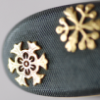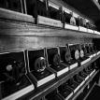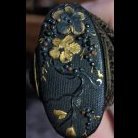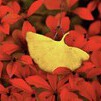-
Posts
2,959 -
Joined
-
Last visited
-
Days Won
18
Surfson last won the day on December 27 2021
Surfson had the most liked content!
About Surfson

Profile Information
-
Gender
Male
-
Location:
Chicago, IL, USA
Profile Fields
-
Name
Bob S
Surfson's Achievements
-
A NMB reader messaged me about what happened with this sword. As I mentioned in the thread, the NTHK-NPO papered it to Ko-Mihara. I thought it was Kamakura, and Darcy had a nice photographic demonstration of the identity of shape with a Sukezane (now gone on this very old thread). The thread also had a lot of debate about muneyaki and other interesting topics, so I decided to go ahead and revive it, even though it got a little chippy at times. When the sword was being fitted for a habaki and shirasaya, Mishina San reached out to me about the nakago. The habaki maker suggested that the nakago be filed and restored because of the active rust, and Mishina San supported that. I approved. When it went to NBTHK, it papered to Sue Bizen. I don't recall whether a specific maker or sub-school was mentioned. I was disappointed because the tang looked much more like that of a much younger sword, and I will never know, but thought that change in image might have influenced the shinsa team. I have moved cross country this month, and my papers are yet to be unpacked after the move. I will dig them up when the unpacking gets to them and see if they said more than Sue Bizen. Cheers, Bob
-

Accidental Autograph Collector Kanzan Sato
Surfson replied to Surfson's topic in General Nihonto Related Discussion
Does anybody have examples of hakogaki made by Kunzan? -

New ( too me ) Nihonto website
Surfson replied to Stephen's topic in Auctions and Online Sales or Sellers
I have met Udo several times at shows in Chicago and Las Vegas. He has high quality items with fair market prices. -
Thanks for your candid views Steve. I may submit them to NTHK-NPO when they come to San Francisco some time. Anybody know if they have top experts for kantei of fittings?
-

Test your ability to read through rust!
Surfson replied to Surfson's topic in General Nihonto Related Discussion
Thanks all. It adheres to my desire to restore and preserve. Cheers, Bob -
What do you think Steve? Shoshin or gimei. I love it either way....
-

Test your ability to read through rust!
Surfson replied to Surfson's topic in General Nihonto Related Discussion
Sorry it took me so long to extend this thread. Since we last discussed it, it has gone to Japan and received Tokubetsu Hozon papers to Kanemitsu. It now has a nice Tanobe sayagaki as well.- 35 replies
-
- 12
-

-

-
Forgot about this post. Does anybody have any opinions about whether the mei matches validated examples? The work is so good that I would be surprised if it isn't shoshin....
-
Winchester started following Surfson
-

NTHK NPO Shinsa (April 2023 Chicago) Update
Surfson replied to NewB's topic in General Nihonto Related Discussion
Thanks Chris, and I hope you make a speedy recovery. -
I think you mean Hindson.
-
Probably a translation of "ichiban"
-
Ben, I love your enthusiasm, and you have the makings of a Nihonto collector. However, I have to say, that you can do better than the pieces you have chosen. You have spent a little over $4000, and for that amount you could get a very nice NBTHK papered (modern accepted version) or NTHK papered blade in full polish, with nice mounts (or very nice mounts if it were a wakizashi). The comments so far have been very respectful, and reflect the fact that most of us made questionable choices early in our collecting career. I have put my honest opinions about the four blades you have bought below, trying to be kind and helpful, but have also added some suggestions for your future plans in collecting. 1. This looks like a genuine Japanese samurai sword in edo mounts. Probably early shinto or perhaps late muromachi, and Bizen Sukemitsu (as it was listed) isn't a bad guess, though whether the signature is "good" is not known without papers. You didn't pay too much for it, but you ended up with a sword that is not in particularly good polish that is not worthy of the expense of a polish and appraisal for papers (my opinion). My advice is to study it, learn about the five schools and where Bizen fits into the early sword making, enjoy it for a while and move it along. A general comment that I hope you take to heart is that it is important to test your ability to sell a Japanese sword. They are easy to buy, hard to sell. If you take good photos, or recycle the ones from the listing, you should be able to sell this one on ebay for about what you paid for it. 2. This is signed Bizen but is not in very good polish. As you can see, it has many ware (pronounced wah re, Japanese for forging flaws), along both sides. Because of the ware, it is also not worthy of polish or papers. It's very hard to find treasures on ebay in general, but particularly on items coming directly from Japan. Again, my advise is to enjoy it as long as you can and then move it along. 3. You know it and you said it. This one is junk and probably not genuine. When you see the kissaki having no curve in it (just the tip looks like a triangle), that is usually a dead giveaway of a fake. Sell it right away or use it to cut weeds in your garden. It is a 100 bucks well spent if it teaches you to control your reflexes in the future and don't bid on such things. Although it was many decades ago, I too went through a phase where I bought my share of basket cases... 4. This is a shobu zukuri wakizashi - possibly a cut down naginata. It has the old papers attributing it to Kanebo Masatsugu (a Yamato smith). As you know, these old papers from the 1970s are disregarded. However, since it is mumei, it doesn't really much matter, since it doesn't have a fake signature on it. It is probably late koto, the Yamato school is possible, and is in decent polish. You bought it from Showa22, who, along with Komonjo, should probably be viewed as a US dealer selling stock that comes straight out of Japan. The price wasn't bad. Again, my advice is enjoy it, study it, but don't bother to get modern papers or do anything else with it. Then move it along. The last one is a Chinese fake, please don't buy it. You have received good advice so far in this thread. Buy books and read them! Become an avid student of NMB. Go to shows and meet people - there are lots of friendly collectors that are happy to help a new collector. Don't get depressed about these early purchases, most of them sold for what they are worth. Just learn how to sell them. If you can't get your money back out of them, you may have overpaid or have to refine your sales technique. As your taste matures, you will hopefully look for two types of blades. First, ones that have no issues and need no restoration - are in good polish, have papers, have nice mounts if that is what you like, etc. This is the best way to build a fine collection these days. Since you and your wife go to Japan, you might do some shopping at sword shops (probably best to avoid those in the Ginza and super high priced establishments elsewhere). You can comparison shop though. Set a budget, ask to see what they have, and by the time you have visited four or five stores, you will know what you can buy for your budget. The dollar is very strong now and you may be quite surprised. Also, if you look on the NMB "for sale" section, you can find some very nice blades in excellent condition with papers and mounts. Second, eventually, you can try to find ones that are candidates for restoration. Twenty five years ago, this was easier on ebay, as there were many GI families selling their father or grandfather's sword on ebay and it was possible to find good signed shinto or shinshinto blades, and good mumei or signed koto blades, that needed restoration. It is a thrill to find a neglected blade that has been sitting for 70 years in an attic or garage that is worthy of restoration. Even then, to do it right, one needed a good reference library to make your own estimate as to whether any signature the sword had was genuine or not. These days, the frequency with which these candidate blades come up on ebay is dramatically low. One can still find them at Japanese sword shows such as in Florida, Chicago, San Francisco, Vegas (your home!) etc. This second approach takes more study than the first approach and I recommend that you focus your next purchases on category 1. Even buying fully restored and papered blades is best done after significant education. Most of us build our collection from the top. To do that one should be in search of better and better pieces and only buy ones that are better than the average or the top of ones collection. When you buy one, sell the ones at the bottom of the collection to get the funds for the next purchase. And finally, enjoy these amazing, historically important objects!
- 6 replies
-
- 14
-

-

-

Quick Sanity Check re Shipping Tsuba from Japan to US
Surfson replied to MikeyJ's topic in General Nihonto Related Discussion
Jeremiah, swords have to be "deregistered" by the Japanese police and that is said to usually be done once a month, so that may be a significant part of the delay. -

The State of Nihonto in the United States
Surfson replied to Cookie4Monstah's topic in General Nihonto Related Discussion
Hi Khalid. There are a number of threads on NMB about great finds that have been made by NMB members. As an early collector, it is easy to get drawn into thinking one has found a treasure when coming across a common blade in "the wild". (for example a mumei wakizashi in so so mounts). It has gotten harder to find treasures, but dig around and you will find these great threads in NMB about fantastic finds. For example, have a look at the "Japanese blade from court" thread.












